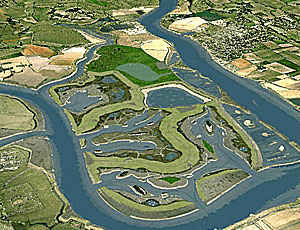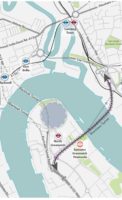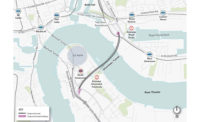Over half the 7.3 million cu m of tunnel spoil from London’s $26-billion Crossrail project is to be barged down the Thames River from tunnel sites to create new wetlands 100 kilometers away.
Project owner Crossrail Ltd. (CRL) will fund land acquisition and earthmoving for the U.K.’s largest coastal habitat creation scheme, on Wallasea Island, next to the River Crouch, Essex.

CRL on Sept. 30 signed an agreement with Port of London Authority enabling barging the equivalent of a half-million truckloads of tunnel spoil along the river. “Using the river is fundamental for us,” says CRL’s chief executive, Rob Holden. Replacing trucks “takes much less energy and generates far fewer environmental emissions,” he says.
Soil delivery to Wallasea Island is due to start in 2011, when work begins on the twin 21-km-long railroad tunnels across central London. CRL has received prequalification applications from potential bidders for two contracts covering 85% of the tunnels.
Tunnel spoil will raise three-quarters of the 750-hectare Wallasea Island by around 1 m by the time Crossrail opens in 2017, says Ciaran Nelson, chief spokesman for the Royal Society for the Protection of Birds. Under its estimated $24-million scheme, the society will landscape the island into a mosaic of mudflats, salt marshes, lagoons and pastures. Sea walls now protecting low-lying island farmland from the surrounding tidal rivers will be breached to create new bird habitats.





Post a comment to this article
Report Abusive Comment